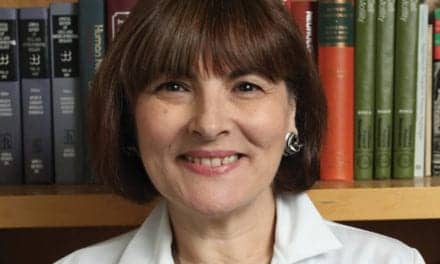By Jonathan Briggs
Every three seconds, someone in the United States needs blood, and not just one or two units. A burn victim often needs 20 units, an automobile accident victim 50, and an organ transplant recipient typically requires up to 40 units of blood products, 30 platelet units, 20 bags of cryoprecipitate, and 25 units of fresh frozen plasma. These individual needs add up to 32,000 units a day or nearly 12 million units of red blood cells and whole blood, 8 million units of platelets, and 3 million units of plasma transfused each year.

Despite this voluminous demand, the U.S. blood supply has never been safer. However, because blood transfusion is in essence a “liquid transplant,” there are still medical risks associated with it. In fact, it has taken nearly 300 years to make blood transfusion as safe and available as it is today. One of the most recent advances in the history of blood transfusion is leukocyte
reduction, or LR. LR is most frequently done by filtration, and the leading maker of LR filters is Pall Corp., headquartered in East Hills, N.Y.
Pall has been developing and manufacturing filters for more than 50 years. Although its filters were used to filter blood nearly 40 years ago, “the first use of Pall filters for leukocyte
reduction was not until the 1980s,” said Judy Angelbeck, senior vice president at Pall Medical. “Sometimes the availability of a technology prompts the question, can that technology help another problem?” Angelbeck said. In this case, the technology is a blood filter Pall developed in the 1960s. Those filters removed micro-aggregates in transfused blood and thereby guarded against the risk of pulmonary emboli in transfusion recipients. The success of that led clinicians to ask if filtering blood could help reduce other possible transfusion complications. Subsequent research found that filtering the blood of patients, who were chronically transfused, reduced their incidence of adverse reactions.
Today, blood components from a single donor may go to up to three recipients. Nevertheless, it is possible for the transfusion of as little as a single blood unit to trigger adverse reactions. Adverse reactions from blood transfusion fall into four groups: non-hemolytic febrile transfusion reactions (mild, flu-like symptoms), alloimmunization and platelet refractoriness (an immune response that prevents patients from accepting and receiving any benefit from transfused blood or platelets), pathogen transmission (Cytomegalovirus, Human T-Cell Lymphotropic Virus and Epstein Barr Virus), and transfusion-associated immunomodulation (TRIM). Leukocytes are a primary culprit in these reactions.
The role of leukocytes was first noticed in the 1980s in patients who needed chronic transfusion support for thalassemia, sickle cell anemia and cancer. “Drs. Barry Wenz, M.D., and Nino Sirchia performed studies to see if reducing the white cell burden would assist in minimizing these adverse reactions. They studied Pall micro-aggregate filters and found that leukocyte reduction was beneficial,” said Angelbeck. Pall continued to develop and improve filters for leukoreduction and in 1990, David Pall, Ph.D., founder of Pall Corp., was awarded the National Medal of Technology for his work on blood filters. Wenz is Pall’s medical director.
Also early in the 1980s, Dr. Anneke Brand of Holland looked at the problem of platelet refractoriness related to alloimmunization in aplastic anemia patients who required transfusion support.” Prior to the availability of Pall’s leukocyte reduction filters, Dr. Brand, using cotton-wool filtration, produced leukocyte-
reduced blood that proved beneficial. Other studies in the ’90s found that LR reduced the likelihood of pathogen transmission and TRIM and improved outcomes in colorectal and cardiovascular surgery patients. In 1988, Pall released a bedside version of its filter, and in 1995 it acquired the plastics manufacturing branch of Bayer Corp. This acquisition gave Pall the
capability to produce integrated blood filtering and component separating systems that could reliably and consistently achieve the low level of leukocytes needed to reduce the incidence of transfusion-related adverse reactions. Currently, Pall filters achieve a level of leukocyte reduction consistently averaging (2 x 105) leukocytes per unit, a level that significantly surpasses the Food and Drug Administration standard.
Increased recognition of leukocytes’ role in producing the adverse effects associated with allogenic blood transfusions, coupled with the availability of filters that could significantly reduce the level of leukocytes in transfused blood, raises the controversial question of universal leukocyte reduction; should all blood products be leukocyte reduced? Opponents of universal LR (ULR) argue that there are not enough studies yet to support its implementation and that the cost is prohibitive. Proponents argue that it is unlikely such studies will be done and that it is better to err on the side of safety for all patients. They also point to several studies which indicate ULR may actually reduce healthcare costs by preventing adverse outcomes.
Meanwhile, ULR by filtration has been implemented as a national policy in the U.K., France, Portugal, Switzerland and Canada.
Several others are starting to implement LR for all donor blood. In 1998, the U.S. Blood Products Advisory Committee to the FDA unanimously endorsed ULR of blood components. This was followed in late 1999 with an American Red Cross announcement that it would proceed with ULR for all its blood collections.
Currently, about 60 percent of U.S. transfused blood is leukoreduced. In January, the Advisory Committee on Blood Safety and Availability voted in favor of national universal blood filtration and has recommended it to the Secretary of the Department of Health and Human Services.
Jonathan Briggs is a freelance writer based in Tijeras, N.M.




